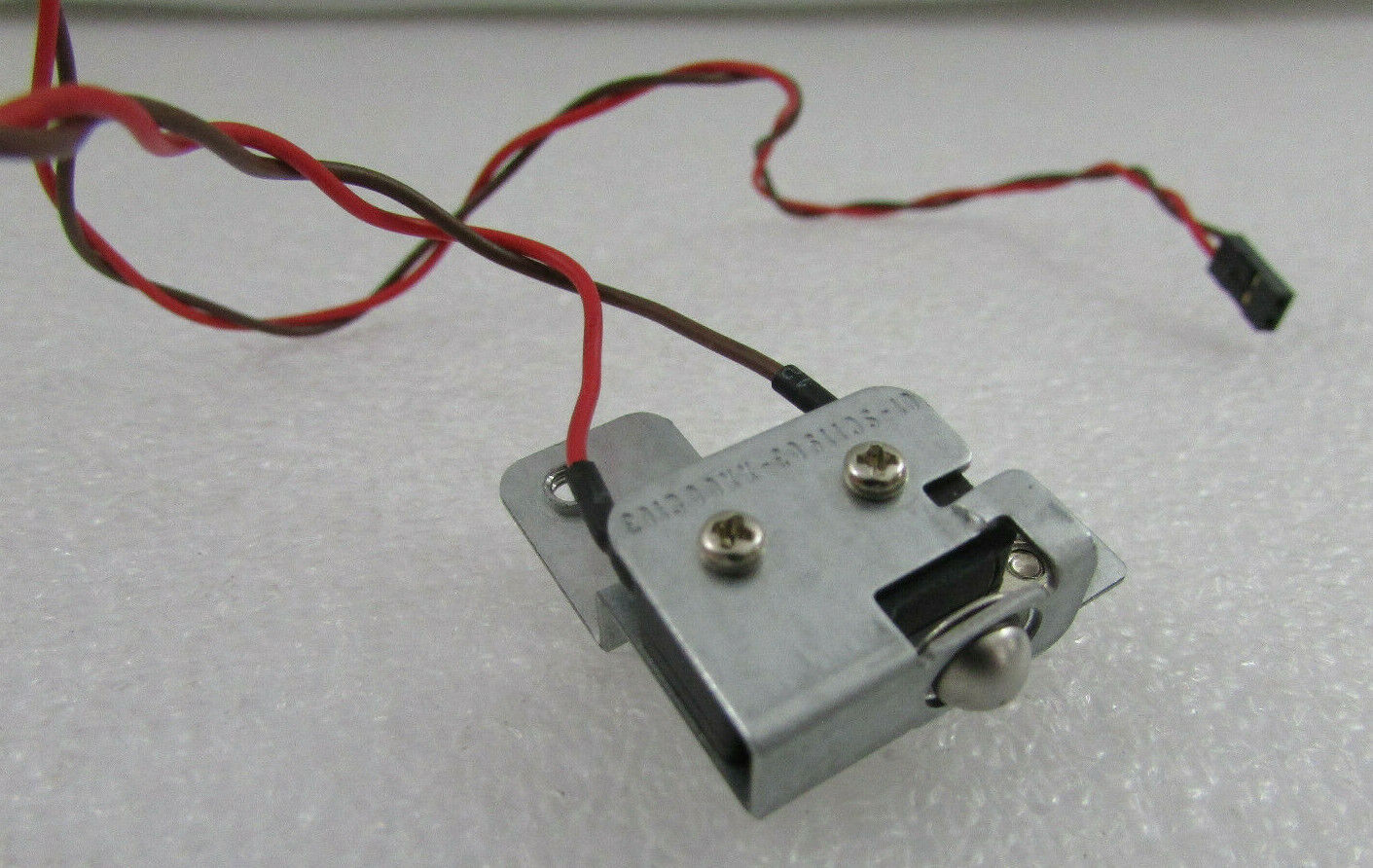Home>Home Security and Surveillance>How Trustworthy Is Data From An Intrusion Detection System?


Home Security and Surveillance
How Trustworthy Is Data From An Intrusion Detection System?
Modified: March 21, 2024
Discover the reliability of data from an Intrusion Detection System for home security and surveillance. Gain insights into the trustworthiness and accuracy of this crucial system.
(Many of the links in this article redirect to a specific reviewed product. Your purchase of these products through affiliate links helps to generate commission for Storables.com, at no extra cost. Learn more)
Introduction
In today’s digital world, ensuring the security of our homes is of utmost importance. Home security and surveillance systems have become increasingly popular, providing homeowners with peace of mind and an added layer of protection. However, as technology advances, so do the potential threats posed by cybercriminals.
Intrusion Detection Systems (IDS) play a crucial role in safeguarding our homes from unauthorized access and potential breaches. These systems constantly monitor and analyze network traffic, detecting any suspicious activity that may indicate a security threat.
But how can we trust the data produced by an IDS? In this article, we will explore the importance of trustworthy data in an IDS and the challenges associated with ensuring its reliability. We will also discuss various techniques and measures to enhance data integrity, confidentiality, and availability.
By understanding the intricacies of data trustworthiness in an IDS, homeowners can make informed decisions and take necessary actions to protect their homes and loved ones.
Key Takeaways:
- Trustworthy data is crucial for home security systems like IDS, ensuring accurate threat detection, timely response, and safeguarding sensitive information. Prioritizing data integrity, confidentiality, and availability is essential for effective protection.
- Overcoming challenges in data trustworthiness requires expertise, robust infrastructure, and proactive security measures. Implementing techniques such as encryption, redundancy, and proper maintenance helps maintain trustworthy data and uninterrupted system functionality.
Read more: What Is Wireless Intrusion Detection
Intrusion Detection Systems (IDS)
Intrusion Detection Systems (IDS) are security tools designed to monitor network traffic and detect any suspicious or malicious activity. These systems act as a safeguard against potential threats and unauthorized access to sensitive information.
There are two main types of IDS:
- Network-based IDS (NIDS): These systems examine network traffic in real-time and identify any signs of unauthorized or abnormal activity. NIDS can be deployed at various points in a network, such as routers or firewalls, to monitor and analyze network packets.
- Host-based IDS (HIDS): These systems are installed on individual host devices, such as computers or servers, and monitor the activities and events occurring on those devices. HIDS analyze system logs and compare them to known patterns of malicious behavior.
The primary goal of an IDS is to identify potential security breaches or attacks and generate alerts or notifications to prompt immediate action. IDS can detect various types of threats, including:
- Unauthorized access attempts
- Malware infections
- Denial of Service (DoS) attacks
- Malicious software activity
- Network scanning
- Exploitation of software vulnerabilities
By continuously monitoring network traffic and analyzing patterns, IDS can provide valuable insights into potential security risks. The gathered data enables homeowners to take proactive measures to mitigate threats and protect their home networks.
Importance of Trustworthy Data in IDS
Trustworthy data is the cornerstone of an effective Intrusion Detection System (IDS). The reliability and accuracy of the data collected by an IDS directly impact its ability to detect and respond to potential security threats. Here are a few reasons why trustworthy data is crucial in IDS:
- Accurate threat detection: IDS relies on accurate and up-to-date data to identify and analyze potential security breaches. If the data is unreliable or compromised, the IDS may miss critical threats or generate false positives, leading to wasted resources and ineffective security measures.
- Timely response: Trustworthy data enables IDS to provide timely alerts and notifications when potential threats are detected. Rapid response is crucial in preventing or mitigating security incidents, and unreliable data can delay the response process, allowing attackers to exploit vulnerabilities.
- Safeguarding sensitive information: Homeowners trust IDS to protect their sensitive personal and financial information. Ensuring trustworthy data is essential to maintaining the confidentiality and privacy of this data. Compromised data in an IDS can lead to unauthorized access and potential data breaches.
- Building user confidence: When homeowners invest in home security systems, they expect reliable and accurate results. Trustworthy data enhances user confidence in the IDS, reinforcing the belief that their homes and loved ones are well-protected.
- Effective resource allocation: IDS systems require resources for data storage, processing, and analysis. If the data collected is unreliable, valuable resources may be wasted on analyzing false positives or non-threatening events. Trustworthy data ensures efficient utilization of resources.
In summary, the importance of trustworthy data in IDS cannot be overstated. It forms the foundation for effective threat detection, enables timely response, safeguards sensitive information, builds user confidence, and optimizes resource allocation. Homeowners must prioritize data integrity, confidentiality, and availability to maximize the effectiveness of their IDS systems.
Challenges in Ensuring Data Trustworthiness in IDS
Ensuring the trustworthiness of data in an Intrusion Detection System (IDS) is not without challenges. Several factors pose hurdles to maintaining reliable and accurate data. Let’s explore some of the common challenges:
- Data Source and Collection: IDS relies on data collected from various sources, including network traffic, system logs, and other security sensors. Obtaining accurate and comprehensive data from these sources can be challenging due to network complexities, device compatibility issues, and limited visibility into encrypted traffic.
- Data Validation Techniques: Validating the integrity and authenticity of collected data is vital for ensuring its trustworthiness. However, implementing effective data validation techniques can be complex. It requires understanding different data validation methods, handling false positives and false negatives, and considering the impact of validation techniques on system performance.
- Data Preprocessing and Cleaning: Raw data collected by an IDS often requires preprocessing and cleaning to remove noise, outliers, and irrelevant information. Proper data preprocessing techniques are necessary to enhance the accuracy and effectiveness of threat detection. However, this process can be time-consuming and resource-intensive.
- Data Storage and Preservation: IDS generates vast amounts of data that need to be stored and preserved for analysis and future reference. Ensuring data storage integrity, durability, and accessibility can be challenging. Secure storage solutions, backup strategies, and data retention policies must be implemented to maintain trustworthy data over time.
- Data Integrity: Maintaining data integrity within an IDS is crucial. Data integrity ensures that data remains unchanged and uncorrupted during its lifecycle, preventing unauthorized modifications or tampering. Techniques such as cryptographic hashing, digital signatures, and checksums are utilized to verify data integrity. However, ensuring end-to-end data integrity can be challenging in a complex and dynamic network environment.
- Data Confidentiality: Protecting the confidentiality of collected data is essential, as it often contains sensitive information. Encryption, access controls, and secure transmission protocols must be implemented to safeguard data confidentiality. However, ensuring data confidentiality without impacting system performance and usability can be a delicate balancing act.
- Data Availability: IDS should be designed to ensure continuous data availability. System failures, network disruptions, or malicious attacks can impact data availability, hindering the ability to detect and respond to security threats. Redundant systems, backup solutions, and disaster recovery plans are essential to maintain data availability in such situations.
Overcoming these challenges requires a combination of technical expertise, robust infrastructure, and proactive security measures. By addressing these challenges, homeowners can enhance the trustworthiness of data in their IDS and strengthen the overall security of their homes.
Data Source and Collection in IDS
Data source and collection play a pivotal role in the effectiveness of an Intrusion Detection System (IDS). The quality and comprehensiveness of the collected data directly impact the system’s ability to detect and respond to potential security threats. Let’s take a closer look at the key aspects of data source and collection in IDS:
- Network Traffic: Network traffic is a primary data source for IDS. It encompasses all the communication occurring within a network, including packets transmitted between devices. IDS monitors network traffic to identify any suspicious or abnormal activity that may indicate a security breach. Various techniques, such as port mirroring, network taps, or network intrusion prevention systems, are employed to capture network traffic effectively.
- System Logs: System logs provide valuable insights into the activities and events occurring on individual host devices. IDS collects and analyzes system logs, which contain information about user logins, software installations, file access, and other activities. System logs help detect unauthorized access attempts, unusual behavior, and potential signs of compromise. Collecting system logs requires configuration and support from the operating system or other host-based monitoring tools.
- Security Sensors: IDS can utilize various security sensors to collect additional data for analysis. These sensors can include intrusion prevention systems, firewalls, antivirus software, or malware detection tools. These sensors generate event logs and alerts based on their monitoring activities, providing valuable information for threat detection and response.
- Honeypots/Honeynets: Honeypots and honeynets are intentionally vulnerable systems designed to attract and trap potential attackers. IDS can deploy honeypots/honeynets as additional data sources to gather information about attack techniques and behaviors. Any activity observed on these decoy systems indicates a security threat, enhancing the IDS’s ability to detect and mitigate attacks.
- External Threat Intelligence: IDS can incorporate external threat intelligence feeds into their data collection process. These feeds provide up-to-date information about known malicious IP addresses, domains, or patterns of attack. Integrating external threat intelligence enhances the IDS’s ability to detect and respond to emerging threats promptly.
Collecting data from these sources requires strategic planning, robust infrastructure, and adherence to best practices. IDS administrators should carefully analyze the specific requirements of their network and choose appropriate data collection methods and tools. The collected data forms the foundation for effective threat detection and response, helping homeowners protect their homes and networks from potential security breaches.
Data Validation Techniques in IDS
Data validation is a critical step in ensuring the accuracy and reliability of the information collected by an Intrusion Detection System (IDS). The purpose of data validation is to verify that the collected data is trustworthy and free from errors or tampering. Let’s explore some common data validation techniques used in IDS:
- Checksums: Checksums are mathematical algorithms that generate unique values based on the data being validated. By comparing the checksum values before and after data transmission, IDS can detect any changes or corruption in the data. Checksums are commonly used to validate data integrity, ensuring that the transmitted data remains unchanged during its journey across the network.
- Digital Signatures: Digital signatures use cryptographic techniques to provide authentication and data integrity. They involve the use of public and private key pairs to create a unique signature for a piece of data. By validating the digital signature with the corresponding public key, IDS can verify the authenticity and integrity of the data, ensuring that it has not been modified or tampered with.
- Pattern Matching: Pattern matching techniques are employed to identify known patterns or signatures of malicious activities in network traffic or system logs. IDS uses pattern matching algorithms to compare the collected data against a database of known threats or attack patterns. When a match is found, an alert is triggered, indicating a potential security threat.
- Anomaly Detection: Anomaly detection techniques analyze the collected data to identify deviations from expected normal behavior. IDS builds models or baselines of normal behavior and compares the incoming data to these models. Any deviations or anomalies that go beyond predefined thresholds are flagged as potential security incidents. Anomaly detection techniques can identify unknown and emerging threats that do not match predefined patterns.
- Data Correlation: Data correlation involves analyzing multiple data points simultaneously to identify relationships or patterns that may indicate a security threat. By correlating data from different sources, such as network traffic, system logs, and security sensor outputs, IDS can gain a holistic view of the network and detect complex attacks that span multiple systems or protocols.
Implementing data validation techniques requires expertise, resource allocation, and careful consideration of the specific requirements of the IDS environment. By utilizing these techniques, IDS can enhance the accuracy and reliability of the collected data, enabling homeowners to quickly and effectively respond to potential security threats.
When evaluating the trustworthiness of data from an Intrusion Detection System, consider factors such as the system’s accuracy, false positive rate, and the effectiveness of its detection techniques. Additionally, regularly update and maintain the system to ensure its reliability.
Data Preprocessing and Cleaning in IDS
Data preprocessing and cleaning are crucial steps in ensuring the accuracy and effectiveness of an Intrusion Detection System (IDS). Raw data collected by IDS often contains noise, irrelevant information, and outliers that can hinder accurate threat detection. Preprocessing and cleaning techniques help refine and optimize the data, improving the system’s ability to detect and respond to security threats. Let’s explore some common techniques used in data preprocessing and cleaning in IDS:
- Data Filtering: Data filtering involves removing noise and irrelevant information from the collected data. Noise can be caused by network fluctuations, environmental factors, or faulty data sources. Filtering techniques such as signal processing algorithms or statistical filtering methods help remove noise, ensuring that the IDS focuses on relevant data for analysis.
- Missing Data Handling: Missing data can occur due to network interruptions, device failures, or other unforeseen circumstances. IDS needs to handle missing data to maintain the integrity of the analysis. Various methods, such as imputation techniques or exclusion of incomplete records, can be employed to address missing data and prevent its impact on threat detection accuracy.
- Outlier Detection: Outliers are data points that deviate significantly from the normal pattern. These data points can distort the analysis and lead to false alarms or missed security threats. Outlier detection techniques help identify and handle these data anomalies, ensuring that the IDS focuses on genuine security events.
- Normalization and Scaling: Normalization and scaling techniques are used to standardize the range of values in the collected data. This ensures that all features or attributes are on a similar scale, preventing any bias towards certain attributes during analysis. Normalization techniques can include, for example, rescaling data to a specific range or normalizing based on statistical measures.
- Dimensionality Reduction: Dimensionality reduction techniques aim to reduce the complexity and size of the data without losing important information. IDS may collect a vast amount of data, and not all features or attributes may contribute equally to threat detection. Techniques like principal component analysis (PCA) or feature selection methods help identify the most relevant features and reduce the dimensionality of the data, improving computational efficiency.
- Data Integration: IDS may collect data from various sources, such as network traffic, system logs, or security sensor outputs. Data integration involves combining and merging data from different sources to create a unified dataset for analysis. This process ensures that all relevant information is considered, providing a comprehensive view of the network and improving the accuracy of threat detection.
Applying these data preprocessing and cleaning techniques in IDS requires careful planning and consideration of the specific requirements of the system. The goal is to optimize the data quality, remove noise and outliers, handle missing data, standardize the data range, reduce dimensionality, and integrate relevant information. By ensuring clean and refined data, IDS can enhance its ability to detect, analyze, and respond to potential security threats effectively.
Data Storage and Preservation in IDS
Data storage and preservation are critical aspects of maintaining the integrity and availability of information collected by an Intrusion Detection System (IDS). Proper data storage ensures that the collected data is securely stored, accessible for analysis, and preserved for future reference. Let’s explore some key considerations for data storage and preservation in IDS:
- Secure Storage Infrastructure: IDS data should be stored in a secure and reliable storage infrastructure that safeguards against unauthorized access, data loss, or tampering. This can involve utilizing secure servers, implementing access controls, and employing encryption techniques to protect sensitive data.
- Redundancy and Backup: Storing IDS data in redundant servers or storage devices ensures high availability and protection against hardware failures or disasters. Regular backups should also be performed to create additional copies of the data. This ensures that data can be restored in the event of server failures, accidental deletion, or data corruption.
- Data Retention Policies: Establishing data retention policies is crucial to determine how long collected data should be stored. Compliance requirements, legal regulations, and the specific needs of the IDS environment should be considered when defining data retention periods. Clear policies help maintain data storage efficiency and ensure data is kept for an appropriate duration.
- Data Archiving: As IDS data accumulates over time, archiving becomes necessary to manage storage space efficiently. Archiving involves moving older or less frequently accessed data to long-term storage systems. Archiving also aids in historical analysis and forensic investigations by preserving data for future reference.
- Metadata Management: Managing metadata, such as timestamps, source identification, or data provenance, is essential for effective data storage and preservation in IDS. Metadata provides crucial context and enables efficient data retrieval and analysis. Maintaining accurate and complete metadata enhances the reliability and usability of the stored data.
- Data Privacy Compliance: IDS data may contain sensitive information, such as personal data or proprietary business information. Ensuring compliance with data privacy regulations is crucial when storing and preserving this data. Implementing appropriate security controls and encryption techniques helps protect personally identifiable information and maintain data privacy.
Implementing a robust and secure data storage and preservation strategy in IDS is vital for maintaining the trustworthiness and availability of collected data. By ensuring secure storage infrastructure, implementing redundancy and backup strategies, defining data retention policies, archiving data, managing metadata, and ensuring data privacy compliance, IDS administrators can effectively store and preserve data for analysis and future reference.
Ensuring Data Integrity in IDS
Data integrity is a crucial aspect of maintaining trustworthy data in an Intrusion Detection System (IDS). Data integrity ensures that the collected data remains accurate, unaltered, and consistent throughout its lifecycle. Here are some important considerations to ensure data integrity in IDS:
- Cryptographic Hashing: Cryptographic hashing is a technique used to verify data integrity. IDS can calculate a hash value for each data packet or log entry using a cryptographic hashing algorithm such as MD5, SHA-256, or SHA-3. The calculated hash value can be compared with the received data to ensure its integrity. Any modifications to the data will result in a different hash value, alerting the system to a potential integrity breach.
- Secure Transmission: Ensuring secure transmission of data is crucial for maintaining data integrity. IDS should utilize secure communication protocols, such as SSL/TLS, to protect data during transmission. Secure transmission prevents unauthorized access and tampering of the data while it is in transit between network components or remote locations.
- Data Validation: Implementing effective data validation techniques helps identify and mitigate potential integrity issues. IDS can verify the integrity of collected data using various validation techniques such as checksums, digital signatures, or data comparisons. By validating the data against trusted sources or predefined patterns, IDS can ensure that the collected data remains intact and unaltered.
- Access Controls: Implementing proper access controls ensures that only authorized personnel can modify or tamper with IDS data. Strong user authentication mechanisms, role-based access controls, and audit trails help prevent unauthorized modifications or tampering. By limiting access privileges to trusted individuals, IDS can maintain data integrity and prevent unauthorized modifications.
- Log Management: Proper management of system logs and audit trails is crucial for maintaining data integrity in IDS. IDS should maintain detailed logs of system activities, user actions, and critical events. Regular review and analysis of these logs can help identify any discrepancies or suspicious activities that may indicate data integrity breaches.
- Change Management: Employing proper change management practices ensures that any modifications or updates to the IDS system are performed safely and with minimal impact on data integrity. Changes to system configurations, software updates, or hardware replacements should undergo proper testing and approval processes to prevent unintended consequences on data integrity.
By implementing these measures, IDS administrators can effectively ensure data integrity throughout the IDS lifecycle. Protecting data from unauthorized modifications or tampering is crucial to maintaining the trustworthiness of the collected data and maximizing the effectiveness of threat detection and response in IDS.
Read more: Where To Place Intrusion Detection Systems
Ensuring Data Confidentiality in IDS
Data confidentiality is a critical aspect of maintaining the trust and privacy of information collected by an Intrusion Detection System (IDS). Ensuring data confidentiality in IDS involves implementing measures to prevent unauthorized access, protect sensitive information, and safeguard data privacy. Here are some essential considerations for ensuring data confidentiality:
- Encryption: Encryption is a fundamental technique used to protect data confidentiality. IDS should employ strong encryption algorithms, such as AES or RSA, to encrypt sensitive data both at rest and in transit. Encryption ensures that even if the data is accessed unlawfully, it remains unreadable and unintelligible.
- Access Control: Implementing robust access control mechanisms is vital in maintaining data confidentiality. IDS should employ strong user authentication methods, such as two-factor authentication or biometrics, to ensure that only authorized individuals can access and manipulate sensitive data. Role-based access controls should be enforced to limit access privileges based on job roles and responsibilities.
- Secure Storage: Protecting the storage of IDS data is crucial in maintaining data confidentiality. This involves using secure storage systems, such as encrypted databases or secure file systems, to store sensitive data securely. Security measures, such as firewalls, intrusion prevention systems, and physical access controls, should also be in place to prevent unauthorized access to the storage infrastructure.
- Data Masking and Anonymization: In certain cases, sensitive data stored in IDS may need to be masked or anonymized to further protect privacy. Data masking involves replacing sensitive information with fictitious data while preserving the structure and usefulness of the data for analysis. Anonymization techniques involve removing or encrypting personally identifiable information from the collected data, ensuring privacy is maintained.
- Secure Data Transmission: Ensuring secure transmission of data is crucial to maintaining data confidentiality. IDS should utilize secure communication protocols, such as SSL/TLS, for transmitting sensitive data between network components or remote locations. Secure transmission prevents unauthorized interception or eavesdropping on the data, ensuring its confidentiality.
- Monitoring and Auditing: Continuous monitoring and auditing of access logs, system activities, and data transfer are essential for detecting any unauthorized access attempts or breaches in data confidentiality. IDS should have mechanisms in place to alert administrators about any suspicious activities or unauthorized access to confidential data.
By implementing these measures, IDS administrators can significantly enhance data confidentiality and protect sensitive information from unauthorized access or disclosure. Ensuring confidentiality builds user trust, supports compliance with privacy regulations, and mitigates risks associated with data breaches or unauthorized data usage.
Ensuring Data Availability in IDS
Data availability is crucial for the effective operation of an Intrusion Detection System (IDS). Ensuring data availability involves implementing measures to prevent disruptions, system failures, or malicious attacks that could compromise the accessibility and usability of IDS data. Here are some important considerations for ensuring data availability in IDS:
- Redundancy and High Availability: Implementing redundancy and high availability is essential for ensuring continuous access to IDS data. This involves deploying redundant systems, servers, or storage devices to provide backup or failover capabilities. If one system fails or experiences downtime, the redundant system takes over without interrupting data availability.
- Backup and Disaster Recovery: Regular data backups and effective disaster recovery plans are essential for ensuring data availability. IDS data should be regularly backed up to remote storage locations, ensuring that data can be restored in the event of system failures, natural disasters, or cyber attacks.
- Monitoring and Alerting: Continuous monitoring of system health, network performance, and data storage is crucial for proactive detection and prevention of any potential issues that may impact data availability. IDS should have monitoring mechanisms in place to alert administrators about system failures, storage capacity limits, or other anomalies that may affect data accessibility.
- Load Balancing: Load balancing techniques distribute the incoming data traffic evenly across multiple servers or network components. This helps prevent resource overload on specific systems, ensuring optimal performance and avoiding disruptions that could impact data availability. Load balancing techniques include round-robin, least-connection, or weighted distribution algorithms.
- Security Measures: Security measures, such as firewalls, intrusion prevention systems, and access controls, are essential for protecting the availability of IDS data. These measures prevent unauthorized access, denial of service attacks, or other malicious activities that could disrupt data availability or compromise system functionality.
- Regular Maintenance and Updates: Regular maintenance, patching, and updates are crucial for ensuring the stability and availability of the IDS system. This includes keeping hardware up-to-date, applying software patches, and performing routine maintenance tasks. Regular updates help mitigate vulnerabilities and optimize system performance, contributing to the overall data availability.
By implementing these measures, IDS administrators can proactively ensure data availability and minimize any potential disruptions. Ensuring data availability facilitates uninterrupted threat detection, timely response to security incidents, and overall system reliability. Maintaining data availability is crucial for homeowners to rely on the IDS system as a robust security solution for their homes.
Conclusion
Intrusion Detection Systems (IDS) play a vital role in protecting our homes and networks from potential security breaches. Trustworthy data is crucial for the effectiveness of IDS, as it directly impacts threat detection, response time, and overall system reliability. Throughout this article, we have explored the various aspects of ensuring trustworthy data in IDS and the challenges associated with them.
We discussed the importance of trustworthy data, highlighting its role in accurate threat detection, timely response, safeguarding sensitive information, building user confidence, and effective resource allocation. A strong focus on data integrity, confidentiality, and availability is essential to maintain the trust and efficacy of IDS.
We delved into the challenges inherent in ensuring data trustworthiness, including data source and collection complexities, data validation techniques, preprocessing and cleaning requirements, and proper data storage and preservation. Overcoming these challenges requires expertise, robust infrastructure, and adherence to best practices.
Additionally, we explored specific measures to ensure data integrity, confidentiality, and availability in IDS. Implementing techniques such as cryptographic hashing, secure transmission, access controls, encryption, redundancy, monitoring, and proper maintenance helps maintain trustworthy data and uninterrupted system functionality.
In conclusion, ensuring trustworthy data in an Intrusion Detection System is a multifaceted task that requires careful planning, implementation, and ongoing maintenance. By prioritizing data integrity, confidentiality, and availability, homeowners can maximize the effectiveness of their IDS, providing robust protection for their homes and networks.
As technology continues to evolve and cyber threats become more sophisticated, maintaining trustworthy data in IDS will remain an essential pillar of home security. Staying informed about emerging best practices, advancements in data analysis techniques, and security measures will empower homeowners and IDS administrators to adapt and protect against ever-evolving threats.
Frequently Asked Questions about How Trustworthy Is Data From An Intrusion Detection System?
Was this page helpful?
At Storables.com, we guarantee accurate and reliable information. Our content, validated by Expert Board Contributors, is crafted following stringent Editorial Policies. We're committed to providing you with well-researched, expert-backed insights for all your informational needs.













